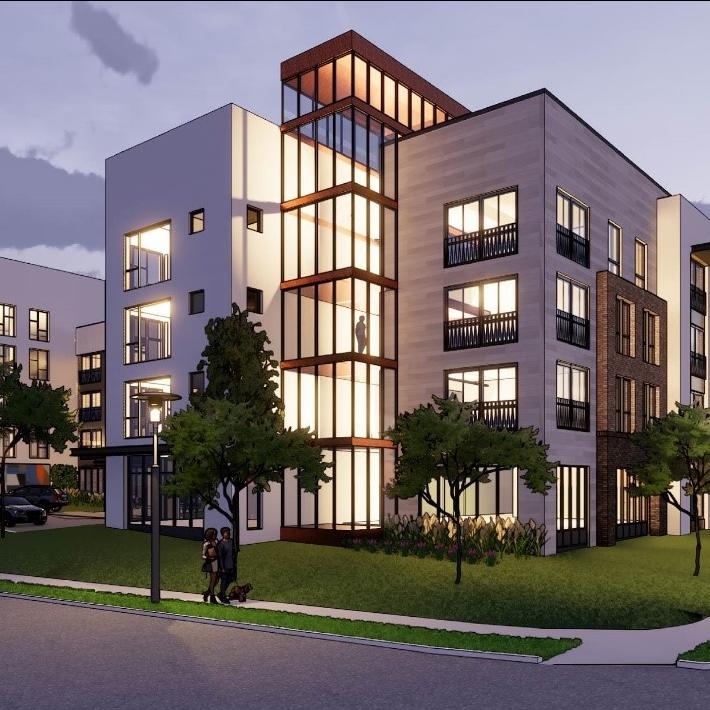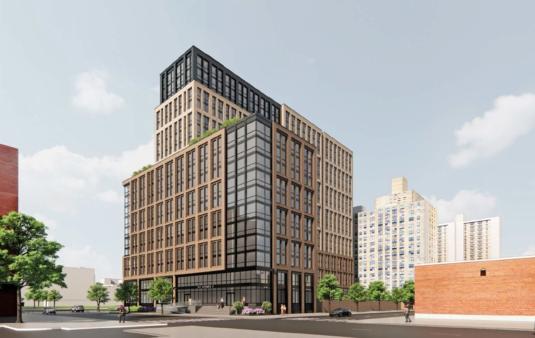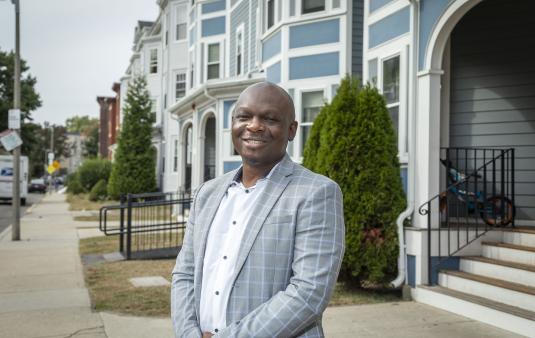Fort Worth’s Stop Six was a traditional working-class neighborhood, named for the streetcar stop that connected it to the rest of the city. Then decades of disinvestment took their toll.
“It is the historic heart of the African American community—but it suffered from all the ill effects of systemic racism as an area that was redlined,” says Cady Seabaugh, Vice President of Communications with McCormack Baron Salazar Development (MBS), the developer of Cowan Place.
Now a large-scale revitalization effort is underway, the product of eight years of planning by more than 40 public- and private-sector organizations, with the active input of Stop Six residents. The resulting Stop Six Transformation Plan integrates more than 1,000 housing units, with options for a range of income levels, and a community hub with fitness facilities, early childhood learning and community services. Seabaugh continues, “It is a market-rate community center model. Our residents said, ‘Why can’t we have something like that?’” Now they will.
As Lou Bernardy, MBS Senior Vice President and Director of Development, Texas, explains, “That is very much in keeping with our priorities as a company. We are not simply replacing 300 public housing units.” Instead, they are partners in rebuilding a neighborhood.
Seabaugh shares some historic context for the Stop Six plan. “In the early ’90s people realized that concentrated public housing wasn’t serving anyone’s interest; we needed to look for a new model—a public-private partnership that could leverage a range of housing resources to create a traditional neighborhood. That means taking a neighborhood that has suffered from disinvestment, probably because of the concentration of public housing, and reinvesting in it to address all the needs that 40 to 60 years of disinvestment created. When you build connections to retail, transportation, education, you can really change the trajectory of the neighborhood.”
For BlueHub, Stop Six offers an important opportunity to extend the geographic reach of our patient capital for low-income communities; it is part of our strategic expansion into Texas, a state underserved by community development financial institutions (CDFIs).
With about $650,000 in financing from BlueHub, MBS started with Cowan Place, 174 affordable apartments for seniors. “The architecture is crisp, modern,” Bernardy says. “That is purposeful. The building has a lantern-lighted design feature that is distinct. It is on the corner of one of the main thoroughfares in Stop Six—it symbolically lights the way to community.”
Those external features signal what is inside, too. “We design and develop to market-rate standards,” says Bernardy. “People often say, ‘Wow. Is that really affordable housing?’ We strive for that reaction.” So, in addition to large community rooms, there are spots to gather on every floor, encouraging residents to leave their apartments and get to know their neighbors. There is a billiards room and a fitness room, a place to hold medical appointments without leaving the building, and a garden area. There are onsite resident services, with particular emphasis on addressing the needs of those in supportive housing.
Critically, a significant number of the Cowan Place apartments are reserved for former residents of nearby Cavile Place, the former 300-unit public housing site. The Stop Six Transformation Plan leaders have been very deliberate about ensuring that residents who were temporarily displaced by the new construction have homes awaiting their return.
Seabaugh says, “Historically, the most successful neighborhoods after reinvestment were the ones that had the highest return of original residents.” Bernardy adds, “People really want to see their neighborhoods improve. They don’t want to leave; they want to be involved and part of what’s happening.” That is what makes it a neighborhood—and that is what drives real change.


